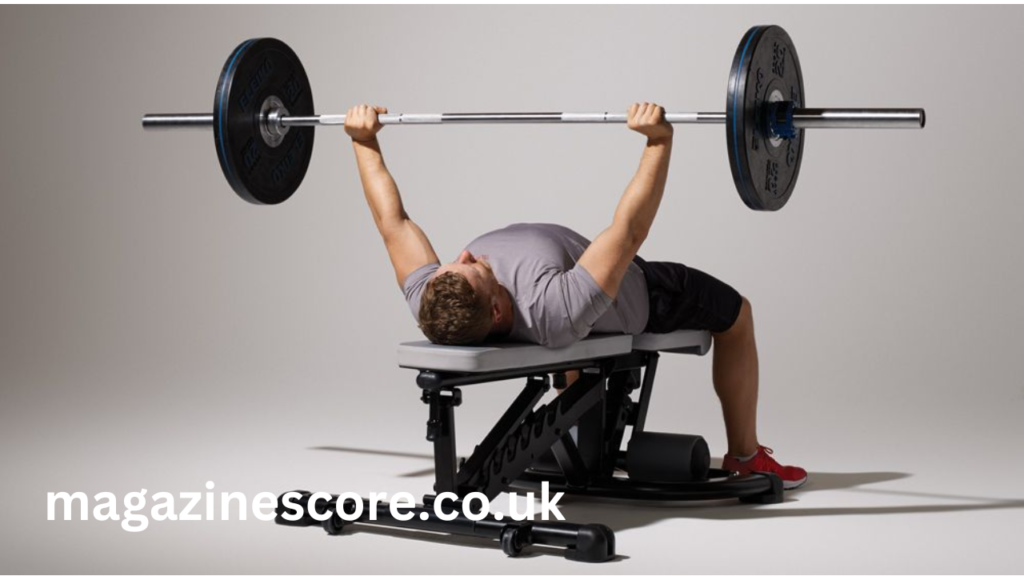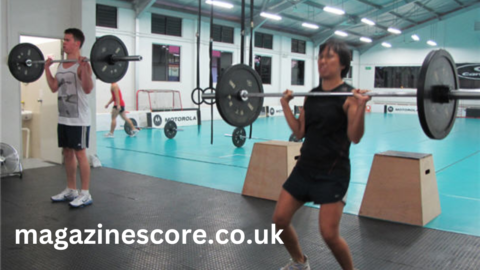The proper bench press form is one of the most effective exercises for building upper body strength, focusing on the chest, shoulders, and triceps. However, performing this exercise incorrectly can lead to injury and hinder progress. In this comprehensive guide, we’ll cover every aspect of bench press form, from setup to execution, and provide tips to optimize performance while minimizing injury risks.
1. Understanding the proper bench press form
The bench press is a compound movement that primarily targets the pectoralis major (chest muscles) while also engaging the anterior deltoids (front shoulders), triceps, and core muscles. It is commonly used in strength training, bodybuilding, and powerlifting.
Performing the proper bench press form ensures that you maximize muscle engagement while reducing unnecessary strain on your shoulders and joints.
2. Benefits of the Bench Press
Before we dive into proper form, let’s discuss the benefits of this classic exercise:
a) Upper Body Strength Development
The bench press is one of the best exercises for increasing pushing strength, helping to develop a powerful chest, shoulders, and arms.
b) Muscle Hypertrophy (Growth)
A well-executed bench press promotes muscle growth, making it a staple exercise for bodybuilders.
c) Functional Strength
Since the bench press mimics real-life pushing motions, it enhances overall functional strength, improving performance in sports and daily activities.
d) Bone Health & Joint Stability
Weight-bearing exercises like the bench press help strengthen bones and support joint stability, reducing the risk of osteoporosis and injuries.
3. Proper Bench Press Form: Step-By-Step Guide
Step 1: Setting Up Your Position
Proper setup is crucial for executing a safe and effective bench press.
i) Bench and Bar Positioning
- Lie flat on the bench with your eyes directly under the barbell.
- Your head, upper back, and glutes should remain in contact with the bench at all times.
- Keep your feet flat on the ground, positioned directly below your knees for stability.
ii) Grip Width
- Use a grip slightly wider than shoulder-width.
- Your wrists should be aligned with your elbows at the bottom of the lift.
- Keep your thumbs wrapped around the bar for safety.
Previous article; YouTube Rain Noise The Ultimate Guide to Relaxation and Focus
iii) Shoulder Blade Retraction
- Before lifting the bar, retract your shoulder blades (squeeze them together) to create a stable base.
- This prevents excessive shoulder strain and enhances force production.
Step 2: Unracking the Bar
- Engage your upper back and push the bar out of the rack while keeping your arms locked.
- Bring the bar over your mid to lower chest before starting the descent.
Step 3: Lowering the Bar (The Descent)
- Breathe in deeply before lowering the bar.
- Control the descent, bringing the bar down slowly and steadily to your chest.
- Keep your elbows at a 45-degree angle from your torso (not flared out at 90 degrees, which can stress the shoulders).
- The bar should touch the mid to lower chest—not your neck or upper chest.
Step 4: Pressing the Bar (The Ascent)
- Drive your feet into the floor as you begin pushing the bar upward.
- Proper bench press form straight up while keeping your shoulders and back tight.
- Exhale as you push, ensuring controlled breathing throughout the movement.
- Fully extend your arms at the top but avoid locking out your elbows aggressively.
Step 5: Racking the Bar Safely
- After the final rep, push the bar back toward the rack in a controlled manner.
- Make sure the bar is securely placed on the hooks before letting go.
4. Common Mistakes to Avoid
Even experienced lifters sometimes make form mistakes that can lead to injury or decreased performance. Avoid these common errors:
a) Flaring the Elbows Too Wide
Keeping the elbows at a 90-degree angle puts excessive strain on the shoulders. Instead, maintain a 45-degree angle to protect your joints.
b) Bouncing the Bar Off Your Chest
Some lifters use momentum to lift heavier weights by bouncing the bar off their chest. This is dangerous and reduces muscle engagement. Control the descent and pause slightly at the bottom before pressing back up.
c) Not Keeping Feet Flat on the Ground
Lifting your feet off the floor or shifting them during the lift reduces stability. Keep your feet planted firmly to generate leg drive.
d) Arching the Lower Back Excessively
A slight natural arch is beneficial, but extreme arching can lead to lower back strain. Maintain a neutral spine for safe lifting.
e) Incomplete Range of Motion proper bench press form
Avoid “half-repping” the movement. Lower the bar all the way to your chest and extend fully at the top for maximum muscle activation.
5. Bench Press Variations
a) Close-Grip Bench Press
- Targets: Triceps more than chest
- Form: Hands placed closer together, shoulder-width apart
b) Incline Bench Press
- Targets: Upper chest and shoulders
- Form: Performed on a 15-30 degree incline bench
c) Decline Bench Press
- Targets: Lower chest
- Form: Performed on a decline bench, with feet secured
d) Dumbbell Bench Press
- Targets: Chest, shoulders, and stabilizer muscles
- Form: Uses dumbbells instead of a barbell for greater range of motion
6. How to Improve Your Bench Press Strength
a) Progressive Overload
Increase weight gradually to challenge your muscles and promote strength gains.
b) Accessory Exercises
- Triceps Dips & Skull Crushers (for triceps)
- Overhead Shoulder Press (for delts)
- Lat Pulldown & Barbell Row (for back stability)
c) Proper Recovery
- Rest for 48 hours between chest workouts.
- Get enough protein and sleep for muscle growth.
d) Mastering Leg Drive
Push through your heels during the lift to generate power from your lower body.
7. Safety Tips and Spotting
a) Always Use a Spotter for Heavy Lifts
A spotter can help you in case of failure, preventing dangerous accidents.
b) Warm Up Before Lifting
Perform light warm-up sets to prepare your muscles and joints.
c) Use Proper Equipment
Ensure the bench and bar are stable, and use safety clips to secure the weights.
8. Final Thoughts
The proper bench press form is a powerful exercise when performed correctly, providing significant strength and muscle gains. By mastering proper technique, avoiding common mistakes, and progressively improving over time, you’ll build a stronger, more muscular upper body while minimizing injury risks.
Would you like a bench press training plan or help with a sticking point in your lift? Let me know how I can assist!








